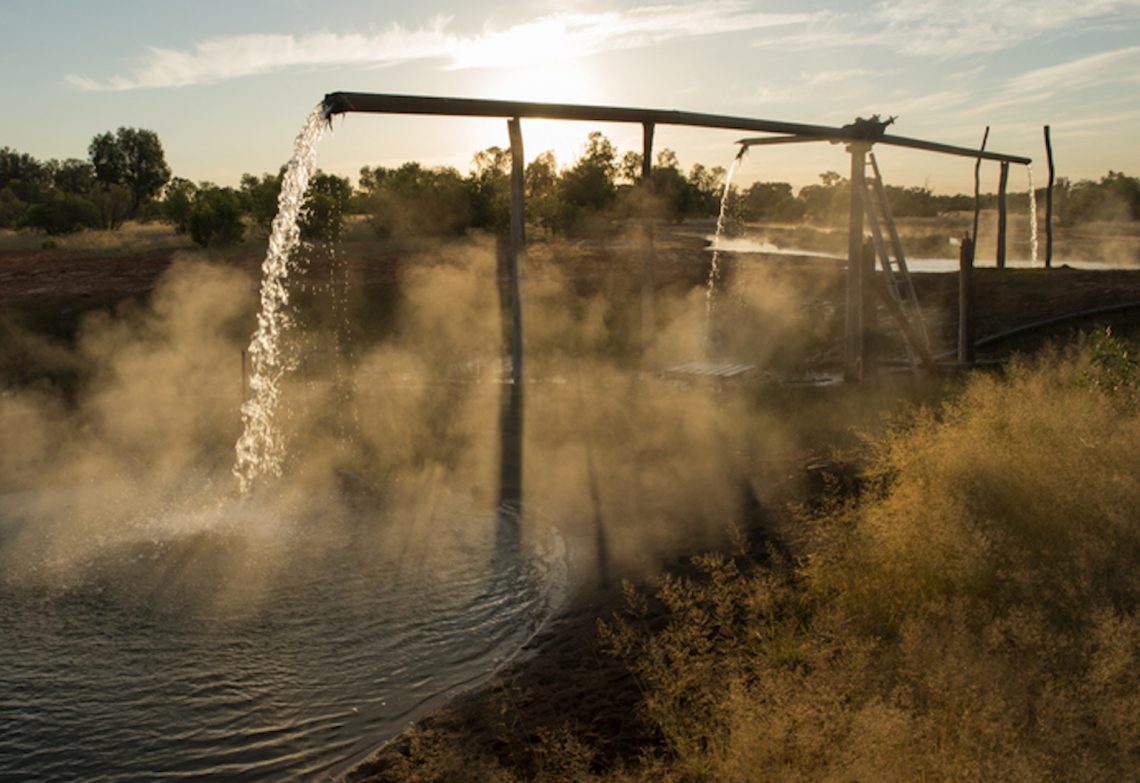Groundwater is the theme for this year’s World Water Day on 22 March, with the aim of “making the invisible visible.” We spoke to some leading engineers in the field about the critical work they are undertaking.
Groundwater makes up some 98 percent of the world’s freshwater — and in Australia, it accounts for around one third of our total water consumption. It is water that is located below the earth’s surface and stored in porous soils and rocks.
According to the National Centre for Groundwater Research and Training, the economic contribution of groundwater use is estimated to contribute to more than $6.8 billion of our gross domestic product each year.
The Great Artesian Basin alone covers 22 per cent of the country, containing water that is more than one million years old and is the largest aquifer of its kind in the world.
In recent decades, Australia has more than doubled its groundwater use — it is the primary water supply available across the majority of the country. But with a growing population, expanding industries and agriculture, and the increasing pressure of climate change it means groundwater will come under an even greater strain.
Troubled waters
Walter Rowlands MIEAus is a senior project hydrogeologist at Australasian Groundwater and Environmental Consultants. He said that accessing groundwater is going to become even more important as we feel the increasing effects of climate change.
“It’s important that we begin demystifying groundwater — a lot of people conceptualise it as underground rivers, but it’s more about how water is captured in rock and soil in the ground,” he said.
“Accessing it later is going to be very important as climate change continues to impact the world and increasing evaporation rates, so there might be a greater reliance on storing water underground.”
Rowlands hopes that this World Water Day helps raise awareness about how important groundwater is to almost everything we do — from drinking water to agriculture, mining, and construction.
“Engineers are working hard in the area of groundwater contamination, such as studying contaminant transport to see how harmful chemicals are getting transported around rivers,” he said.
“There’s a lot of work needed in sustainable yield studies — that’s field testing to see how much water can be withdrawn from an aquifer in balance with how much is coming in,” he said.
One such project Rowlands has worked on in the area of contamination transport was in the United States, where pollutants were threatening the water supply of a number of major cities.
“We developed a flow model, which took in a lot of local information, such as groundwater levels and sampling concentrations of different analytes in different locations,” he said.
“We then loaded it into a computer and ran simulations to try to determine the timings as to when this source might actually be compromised due to contaminant transport, so that they were able to start calling in mitigation measures.
Future proofing
Dana Wilson, senior associate and environmental engineer in Douglas Partners’ Newcastle office, said that many Australians don’t realise just how integral groundwater is to our ecosystem.
“It feeds surface water, such as streams and wetlands, and it also takes a long time to get into the ground and recharge,” she said.
From an engineering perspective, she said that a large part of her discipline is collecting data.
“We’re developing models, running reports and working on solutions to manage and maintain groundwater,” she said. “It also needs to tie into other engineering disciplines, which is really important.”
Wilson collects data from groundwater wells installed around the city of Newcastle.
“We’re up to about three or four years of capturing and monitoring data, and are aiming to form detailed climate change and sea level rise studies — particularly for low-lying areas,” she said.
In addition to looking at the big picture, Wilson said that environmental engineers are often engaged for heavily legislated construction works, such as basement dewatering.
“One project that I’m working on involves site investigation, looking at groundwater levels, and installing monitoring devices,” she said.
“From there, we might develop a groundwater model in 2D or 3D, which looks at how much groundwater is going to come in and ways to minimise it, and then how they can manage, monitor, and look for suitable disposal options to protect the groundwater.”
Multidisciplinary approach
Hugh Middlemis CPEng, principal groundwater engineer at South Australia’s HydroGeoLogic, said that despite most Australians living in cities with water supplies largely drawn from dams filled by rainfall-runoff, cities such as Perth still draw around half of their water requirements from the ground.
“Across Australia, groundwater is a very important source, even more so now that small-scale or mobile desalination plants can be deployed by engineers to make use of brackish or saline groundwater where freshwater is scarce,” he said.
Middlemis has worked on a number of environmental watering projects, salinity management for dryland and irrigation areas, and groundwater modelling for in situ mining such as gold, lithium, borax and potash around the world.
He said that most groundwater investigations in these areas are complex, and involve multi-disciplinary teams including hydrogeologist or hydrologist engineers working alongside a wide range of scientists, including geologists, geophysicists, geochemists, environmental scientists, and ecologists.
“The multi-disciplinary approach usually results in insightful and robust solutions to technical and management challenges — although I have to say that, in my experience, some projects are affected adversely by political factors, especially in the Murray-Darling Basin,” he said.
Join us this November at the Hydrology & Water Resources Symposium as we discuss current water issues, including the recent NSW and QLD floods, and explore innovations shaping the future of water engineering. Submit your abstract by Friday 20 May to be considered for inclusion on the program. Find out more at hwrs.com.au



